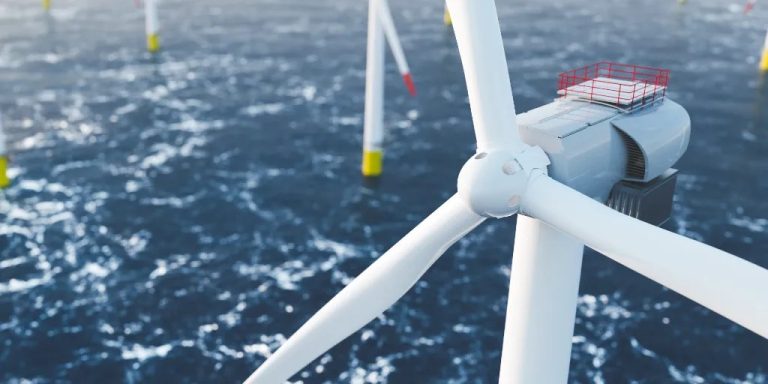from CFACT
David Wojik
Resources for the Future (RFF) conducted a comprehensive cost-benefit analysis of 32 U.S. offshore wind projects currently in development. They proudly point out that the benefits exceed the costs by a factor of 14. But these purported benefits are not only exaggerated; They are fabricated. They simply don't exist.
Their long title is “Offshore Wind Check: Impacts, Benefits, and Costs of Offshore Wind Farms on the U.S. Atlantic and Gulf Coasts.” See https://www.rff.org/news/press-releases/new-modeling-shows-offshore-winds-benefits-to-climate-health-and-energy-bills/.
The analysis is quite simple and it is easy to see the fallacy. There are only four basic benefit claims. Of course, this is all based on a highly questionable model.
Before looking at these benefit claims, it's worth noting a common misconception. They hypothesized that when one megawatt-hour of wind power displaces one megawatt-hour of coal- or gas-fired generation, the latter's emissions are reduced by the amount needed to produce one megawatt-hour. As I write, this is not the case.
Baseload fossil fuel power plants operate on high-pressure steam produced by giant boilers. These power plants must be prepared to generate electricity when wind and solar power operate intermittently. They typically operate while their output is temporarily displaced by offshore winds. The reduction in emissions is relatively small compared to power displacement.
Every RFF benefit amount is based on this incorrect displacement assumption. So if they were real, they would all be much smaller than they estimated. But as we've now seen, they weren't real.
The first and by far the biggest purported benefit is the modification of climate change. This benefit is greater than the other three combined.
Its claimed climate benefit is to reduce the number of deaths caused by global climate change over the next 300 years. I'm not making this up. This is their ridiculous explanation:
“The GIVE model is one of three models on which the EPA (2023c) Social Cost of Carbon Dioxide is based, which estimates that for every 1 million tons of carbon dioxide emitted in 2020, between then and 2300 (the subsequent GIVE model), 43 Premature deaths. Based on the number of deaths per million tons, we estimate that the reduction in CO2 emissions from the operation of the simulated offshore wind farm would prevent 1,600 premature deaths from offshore wind. A major portion of the overall estimated dollar value of electric field greenhouse gas emissions reductions.
Our emissions won't cause any climate change deaths, let alone between now and 2300, so this benefit doesn't exist.
The next biggest benefit is a reduction in so-called deaths from pollution from power plants. Here's their summary:
“Our model estimates that offshore wind farms will prevent approximately 436 premature deaths in the United States per year by reducing ground-level PM2.5. We estimate that an additional 84 premature deaths per year will be prevented due to reductions in ground-level ozone pollution; However, this is more uncertain than our PM2.5-related mortality estimates because ozone formation is more sensitive to background assumptions and our estimates are based on the national average estimated ozone mortality from power plant emissions (EPA 2023a) rather than on Model: explains where emissions change.
Emissions from power plants don't cause the deaths the EPA imagines, so the benefit doesn't exist. Steve Milloy's “Pollution Scare: Why and How to Fix the EPA” is a great book about the PM2.5 scam.
The third so-called benefit is “saving electricity bills.” Again, I'm not making this up. It is well known that backup costs make renewable energy expensive, and offshore wind is a very expensive renewable energy source, so electricity bills will rise significantly rather than fall.
To get these so-called savings, they basically rebuilt the land-based power generation system and built the offshore power generation system with cheaper stuff. Here's their opaque summary:
“According to our results, the construction of 35 GW of offshore wind farms reduces the average capacity factor of non-variable generation capacity and leads to a change in the mix of such capacity. This change is the result of shifting several GW of capacity from fixed costs to higher Types with high, lower operating costs are moved to types with lower fixed costs and higher operating costs, thereby reducing costs and increasing profits at a reduced capacity factor.
Reducing the capacity factor to reduce people's electricity bills does sound like a model-driven fantasy. Also, it sounds like the purported savings are from bills in some future scenario, not today's bills. In this case, the claim is a scam.
The last benefit is even more far-fetched. It is “savings for natural gas users outside the power sector”. The simple idea is that a lot of gas is displaced by the wind, causing gas prices to drop for everyone. Not minding you too much, but a little.
“Offshore wind farms lowered projected average natural gas prices in the U.S. and Canada by 2.5%, from $4.12 to $4.02 per MMBtu, due to reduced demand for natural gas from the power sector,” they said.
If only economics were that simple, but it's not. In addition to electricity, natural gas is also a huge market. Additionally, much of the region now uses fracked natural gas, which costs about $2.00. So this small change of 2.5% is not credible.
This is for false interests. They are said to cost 14 times as much, but they don't exist. However, the costs are very real. At least RFF doesn't list jobs as benefits because they are costs. They just use fairy tales.
Maybe this report was written for politicians and others who would quote it but never read it. Or for those who believe in fairy tales that massive U.S. emissions will kill people around the world over the next 300 years. I like to think my readers are smarter than that.
There are no benefits to offshore wind; it’s a damaging and costly policy mistake.
Relevant
